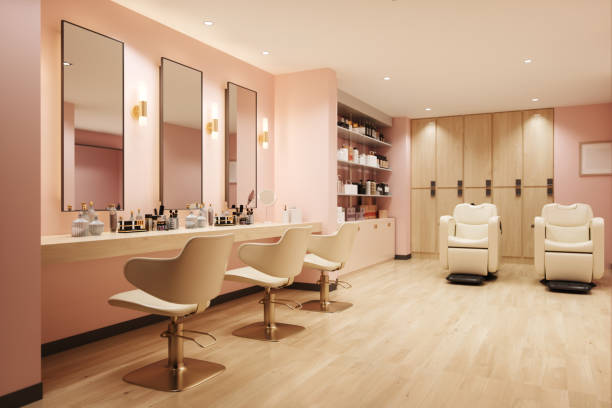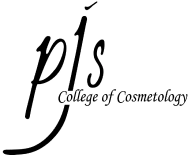August 22, 2025
How to Start a Successful Salon Business: Complete Guide for Beauty Entrepreneurs

The Complete Guide to Starting a Successful Salon Business in 2025
Opening a salon represents the ultimate goal for many beauty professionals – the opportunity to build your own brand, create your ideal work environment, and achieve financial independence. However, salon ownership requires much more than excellent technical skills. This comprehensive guide covers everything you need to know about starting and running a successful salon business.
Market Research and Business Planning
Understanding Your Local Market
Before investing in salon ownership, conduct thorough market research to understand your local beauty industry landscape:
- Competitor Analysis: Visit competing salons to assess their services, pricing, and client experience
- Demographics: Study your target area’s population, income levels, and beauty spending habits
- Market Gaps: Identify underserved niches or services missing in your market
- Location Analysis: Evaluate foot traffic, parking availability, and visibility for potential locations
Developing Your Business Plan
A comprehensive business plan is essential for success and required for most financing options:
- Executive Summary: Overview of your salon concept and goals
- Market Analysis: Research findings and target customer profiles
- Services and Pricing: Detailed menu of services with competitive pricing strategy
- Marketing Plan: How you’ll attract and retain clients
- Financial Projections: Startup costs, operating expenses, and revenue forecasts
- Management Structure: Staffing plans and operational procedures
Legal Requirements and Business Structure
Choosing Your Business Structure
Select the appropriate legal structure for your salon:
- Sole Proprietorship: Simplest structure, but personal liability exposure
- LLC (Limited Liability Company): Protects personal assets, flexible tax options
- Corporation: More complex but offers maximum protection and growth potential
- Partnership: Suitable if opening with business partners
Essential Licenses and Permits
Obtain all required legal documentation:
- Business License: General business operation permit
- Salon License: Specific beauty establishment license
- Professional Licenses: Your personal cosmetology or esthetics license
- Employer Identification Number (EIN): Required for tax purposes and hiring employees
- Workers’ Compensation Insurance: Required in most states when hiring employees
- General Liability Insurance: Protects against client injury claims
Financial Planning and Startup Costs
Initial Investment Requirements
Salon startup costs vary significantly based on size, location, and concept:
Equipment and Furniture: $15,000-$50,000+
- Styling chairs and stations
- Shampoo bowls and backwashes
- Hair dryers and processing equipment
- Reception area furniture
- Retail display units
- Point-of-sale systems
Renovation and Build-Out: $10,000-$100,000+
- Plumbing for shampoo stations
- Electrical work for equipment
- Flooring and lighting
- Paint and decor
- ADA compliance modifications
Initial Inventory: $3,000-$15,000
- Professional hair products
- Color and chemical supplies
- Tools and accessories
- Retail products for resale
Operating Capital: $10,000-$30,000
- First few months of rent and utilities
- Initial marketing and advertising
- Staff payroll during startup period
- Unexpected expenses buffer
Location Selection and Lease Negotiation
Choosing the Right Location
Location can make or break salon success:
- Visibility: High-traffic areas with good street visibility
- Accessibility: Easy parking and ADA compliance
- Demographics: Match location to target clientele
- Competition: Balance between avoiding oversaturation and benefiting from beauty district traffic
- Growth Potential: Consider area development plans and population trends
Lease Negotiation Tips
- Rent Percentage: Keep rent under 10-15% of projected gross revenue
- Lease Terms: Negotiate reasonable length with renewal options
- Tenant Improvements: Seek landlord contribution to renovation costs
- Exclusive Use: Prevent competing businesses in the same complex
- Assignment Rights: Ability to sell business and transfer lease
Salon Design and Layout
Creating Functional Design
Efficient salon layout maximizes productivity and client comfort:
- Flow Patterns: Design logical traffic flow from reception to service areas
- Service Zones: Separate areas for different services (color, cutting, styling)
- Storage Solutions: Adequate storage for supplies and client belongings
- Lighting: Proper lighting for color services and client comfort
- Acoustics: Sound control for pleasant atmosphere
Building Your Brand Through Design
Your salon’s physical space should reflect your brand identity:
- Color Schemes: Choose colors that reflect your brand personality
- Furniture Style: Modern, classic, or eclectic depending on target market
- Retail Integration: Seamlessly incorporate product sales areas
- Technology Integration: Plan for Wi-Fi, charging stations, and digital displays
Staffing and Team Building
Hiring the Right Team
Your team directly impacts client satisfaction and business success:
Key Positions to Fill:
- Senior Stylists: Experienced professionals who can mentor others
- Assistant Stylists: Entry-level positions for recent graduates
- Receptionist: Front desk management and appointment scheduling
- Salon Coordinator: Operations management and client relations
Compensation Structures
Choose compensation models that motivate and retain staff:
- Commission-Based: 40-60% of service revenue
- Hourly Plus Commission: Base hourly wage plus service commission
- Booth Rental: Independent contractors rent space
- Salary Plus Incentives: Base salary with performance bonuses
Creating Positive Culture
Establish workplace culture that attracts and retains quality staff:
- Continuing Education: Support staff professional development
- Team Building: Regular staff meetings and social events
- Recognition Programs: Acknowledge outstanding performance
- Clear Policies: Establish professional standards and expectations
Marketing and Client Acquisition
Grand Opening Strategy
Generate buzz and attract initial clientele:
- Soft Opening: Invite friends, family, and industry contacts
- Grand Opening Event: Public celebration with special offers
- Local Media: Press releases to newspapers and lifestyle magazines
- Social Media Launch: Comprehensive digital marketing campaign
Ongoing Marketing Strategies
Build consistent client base through multiple marketing channels:
Digital Marketing:
- Professional Website: Online booking, service menus, staff bios
- Social Media Presence: Instagram, Facebook, TikTok showcasing work
- Google My Business: Local search optimization
- Email Marketing: Newsletters and appointment reminders
Traditional Marketing:
- Referral Programs: Incentivize existing clients to refer friends
- Local Partnerships: Collaborate with complementary businesses
- Community Events: Participate in local festivals and charity events
- Print Advertising: Local newspapers and lifestyle publications
Financial Management and Growth
Key Performance Indicators
Monitor these metrics to ensure business health:
- Average Ticket: Revenue per client visit
- Client Retention Rate: Percentage of returning clients
- Stylist Productivity: Services performed per stylist per day
- Retail Sales Percentage: Product sales as percentage of total revenue
- Profit Margins: Track profitability by service category
Managing Cash Flow
Maintain healthy cash flow through:
- Appointment Scheduling: Optimize booking to minimize downtime
- Inventory Management: Balance product availability with carrying costs
- Accounts Receivable: Implement efficient payment collection systems
- Seasonal Planning: Prepare for slower periods and busy seasons
Growth Strategies
Expand your business through:
- Service Menu Expansion: Add new treatments and specialties
- Additional Locations: Open satellite salons in new markets
- Franchise Opportunities: License your concept to other entrepreneurs
- Education Services: Offer training to other beauty professionals
Common Challenges and Solutions
Staffing Issues
- Challenge: High turnover in beauty industry
- Solution: Competitive compensation, positive culture, growth opportunities
Competition
- Challenge: Established salons and chain competitors
- Solution: Unique positioning, exceptional service, strong branding
Economic Fluctuations
- Challenge: Beauty services affected by economic downturns
- Solution: Diverse price points, loyalty programs, essential service focus
Technology Changes
- Challenge: Keeping up with industry innovations
- Solution: Continuing education, gradual technology adoption, staff training
Preparing for Salon Ownership
Gaining Experience
Before opening your salon, gain valuable experience:
- Work in Multiple Salon Types: Understand different business models
- Develop Management Skills: Take on leadership roles in current position
- Study Business Fundamentals: Take business courses or workshops
- Build Client Base: Establish loyal following you can transition to your salon
Financial Preparation
Prepare financially for ownership:
- Save Startup Capital: Accumulate funds for initial investment
- Establish Business Credit: Build credit history for financing options
- Create Emergency Fund: Maintain reserves for unexpected challenges
- Understand Financing Options: Research SBA loans, investor funding, equipment financing
The Role of Education in Success
Quality beauty education provides the foundation for successful salon ownership. At PJ’s College of Cosmetology, we don’t just teach technical skills – we prepare future salon owners with business knowledge, leadership skills, and industry connections that contribute to entrepreneurial success.
Our instructor training programs also prepare graduates to potentially teach in their own future training facilities, creating additional revenue streams and industry influence.
Many of our most successful graduates have opened their own salons throughout Indiana and Kentucky, often returning to PJ’s for continuing education and to recruit quality staff members.
Taking the Next Step
Salon ownership represents one of the most rewarding paths in the beauty industry, offering creative fulfillment, financial independence, and the opportunity to impact your community. While challenging, proper planning and preparation significantly increase your chances of success.
Start by gaining excellent technical skills and industry knowledge through quality education, then build experience in various salon environments before taking the entrepreneurial leap.
Ready to begin your journey toward salon ownership? Contact PJ’s College of Cosmetology at 800-62-SALON (72566) to learn how our comprehensive programs can provide the foundation for your future business success.
Whether you’re just starting your beauty education or you’re an experienced professional ready to take the next step, we’re here to support your entrepreneurial dreams in the beauty industry.
